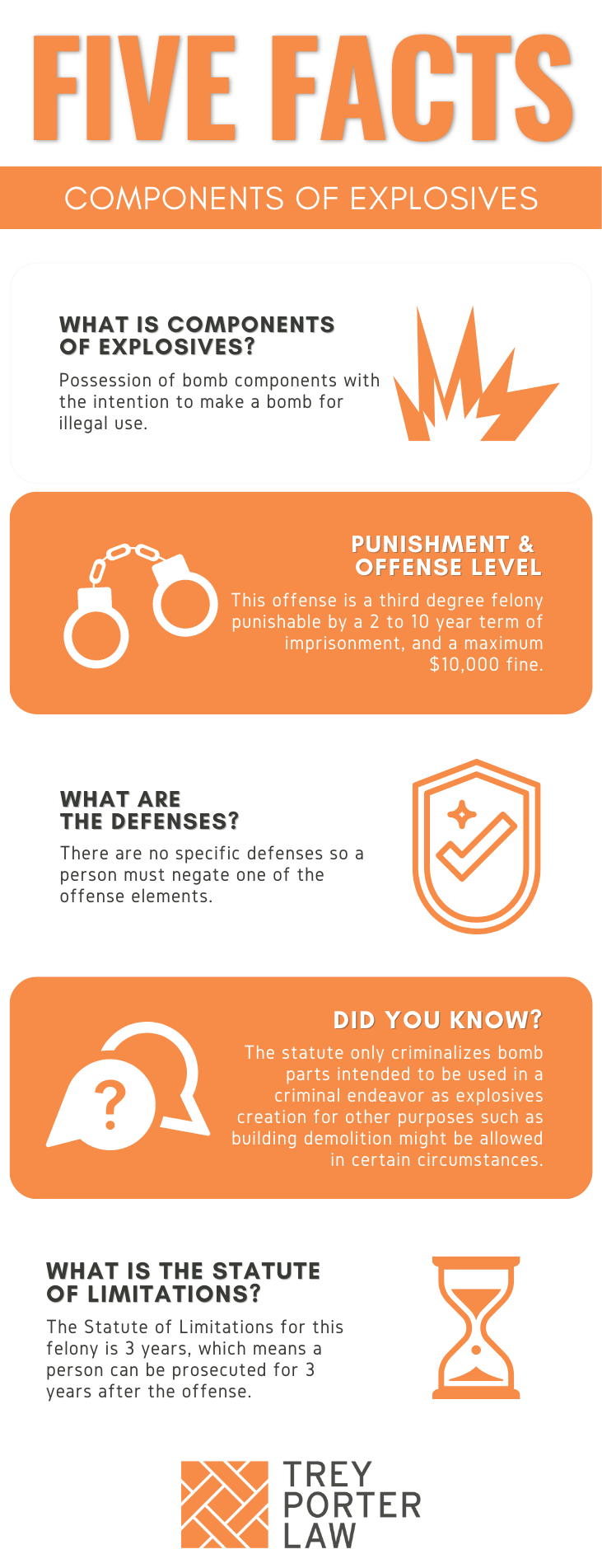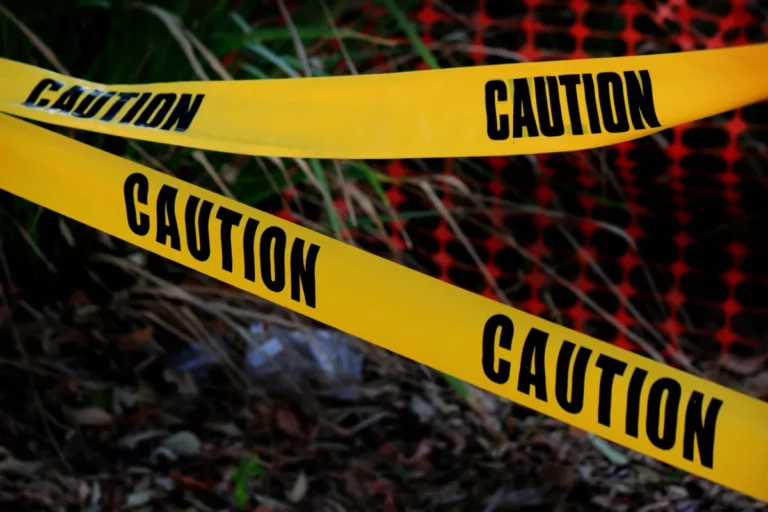WHAT IS COMPONENTS OF EXPLOSIVES IN TEXAS?
The Texas law against components of explosives prohibits possessing components of an explosive weapon intending to make a bomb to use illegally.

WHAT IS THE COMPONENTS OF EXPLOSIVES LAW IN TEXAS?
Tex. Penal Code § 46.09. COMPONENTS OF EXPLOSIVES.
(a) A person commits an offense if the person knowingly possesses components of an explosive weapon with the intent to combine the components into an explosive weapon for use in a criminal endeavor.
(b) An offense under this section is a felony of the third degree.
WHAT IS THE PENALTY CLASS FOR COMPONENTS OF EXPLOSIVES IN TEXAS?
Possessing components of explosives is a third degree felony, punishable by two to ten years in prison.
WHAT IS THE PUNISHMENT RANGE FOR COMPONENTS OF EXPLOSIVES IN TEXAS?
The punishment range for possessing components of explosives is between two and ten years in prison, and a maximum $10,000 fine.
WHAT ARE THE PENALTIES FOR COMPONENTS OF EXPLOSIVES IN TEXAS?
A person charged with components of explosives may be eligible for probation after a conviction, or deferred adjudication without a conviction, for a period not to exceed ten years.
WHAT ARE THE DEFENSES TO COMPONENTS OF EXPLOSIVES IN TEXAS?
The statute does not authorize specific defenses to components of explosives. A person accused thereof may attempt to negate at least one of the elements the State must prove at trial.
WHAT IS THE STATUTE OF LIMITATIONS FOR COMPONENTS OF EXPLOSIVES IN TEXAS?
The limitation period for components of explosives is three years.
COMPONENTS OF EXPLOSIVES IN TEXAS
Texas law punishes possessing components of explosives to be used in a criminal endeavor. Components used to make explosive weapons include items such as blasting caps, fuse materials, gunpowder, and matches.
TEXAS COMPONENTS OF EXPLOSIVES COURT CASES
The case law regarding components of explosives in Texas gives examples of prohibited items used to create explosive weapons.
- In Bradley v. State, the defendant was caught stealing .410 shotgun ammunition from Walmart. He was searched and had a flare gun modified to fire .410 shotgun rounds, a smokeless-gunpowder-filled piece of bamboo with an improvised fuse attached, and matches. The defendant was convicted of possessing components of explosives with the intent to combine the components into an explosive weapon for use in a criminal endeavor. The appellate court affirmed.
- In Zarnow v. City of Wichita Falls, the defendant’s coworkers at a health clinic discovered a gun, .50 caliber armor-piercing ammunition, blasting caps, a fuse cord, and fuse-type materials in the defendant’s desk. Firefighters and police arrived, and found a riot bomb, smoke grenades, black powder, and 48 bottles of nitromethane liquid (a binary explosive).The defendant’s case was no-billed by a grand jury, and he brought suit against the city officials for the search in violation of his Fourth Amendment rights. However, had the search been determined as legal, the defendant could have been prosecuted for components of explosives.
















